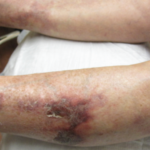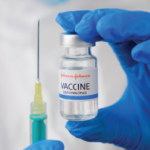Payers See Value
The treatments are about 70 times more expensive than pennies-a-day warfarin, according to Express Scripts Holding Co, the largest U.S. pharmacy benefits manager. But given the superior safety and convenience, Express Scripts said in a statement that “the overall value is likely justified.”
Health insurer Aetna Inc expects approval of the Portola drug to gradually increase use of Xarelto and Eliquis, says Edmund Pezalla, Aetna’s national medical director for pharmaceutical policy and strategy.
Xarelto and Eliquis are approved to treat patients with a type of irregular heartbeat called atrial fibrillation that significantly increases stroke risk, as well as to prevent blood clots following hip or knee replacement, and to treat deep vein thrombosis and pulmonary embolism.
Paul Burton, vice president of medical affairs for Johnson & Johnson’s Janssen unit, stressed Xarelto’s safety but said availability of Portola’s drug would enhance doctor comfort levels.
The Xarelto partnership is seeking additional approved uses, with trials underway in patients with acute coronary syndrome, and for reduction of major adverse cardiovascular events in patients with heart failure or peripheral artery disease.
Bristol and Pfizer have a direct-to-consumer television ad campaign to increase Eliquis awareness.
“We believe that a reversal agent could be an important consideration for physicians when initiating Eliquis and switching appropriate patients from warfarin to Eliquis,” Bristol and Pfizer said in a joint statement.
Portola’s reversal drug “will certainly help sales. Anybody who was waiting on the sidelines will not be fence-sitting anymore,” says Les Funtleyder, healthcare portfolio manager for E Squared Capital Management, which holds Pfizer shares.
The drug would become Portola’s first product on the market.
Cowen and Co forecast $355 million in sales by 2020 for the antidote. Portola is also developing a drug to rival Xarelto and Eliquis.
Duke University’s Dr. Jerrold Levy predicted that all hospitals will stock the Portola antidote.
“It increases the safety margin,” Levy says.



